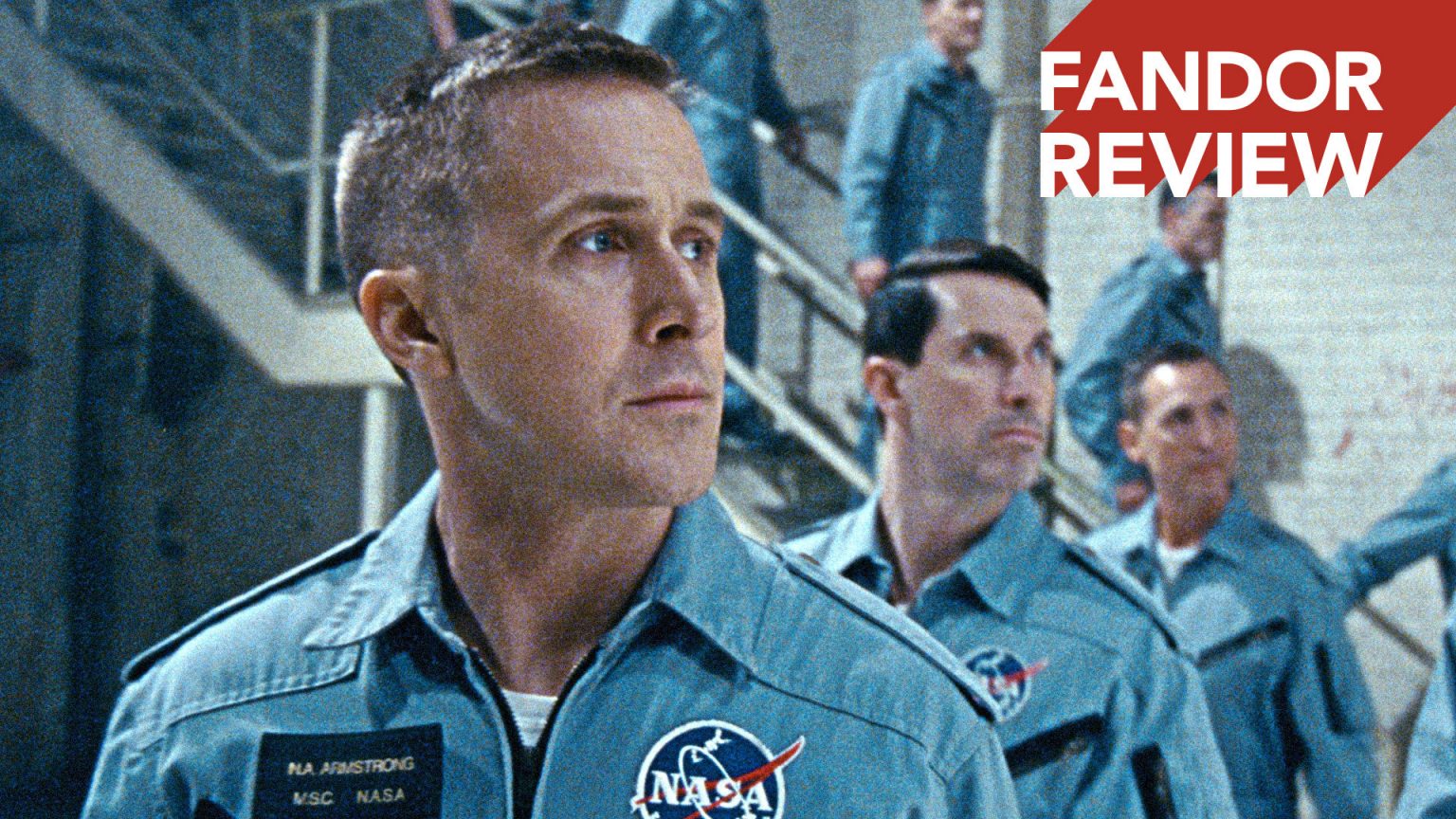Damien Chazelle’s First Man has quite the stunning lift-off and landing for this biopic on Neil Armstrong — played by the always solid Ryan Gosling. It’s unfortunate then, that everything in between fails to launch. And even more so, considering the energy that Chazelle showed with his breakout Whiplash and for his fourteen-time Oscar nominee (and infamously seven, I mean six-time winner) La La Land. It’s perplexing that First Man, for long stretches of time, feels like a drag.
The film gets off to a strong start with an intensely claustrophobic and visceral sequence of Neil Armstrong’s X-15 test flight, shot by Oscar-winning cinematographer Linus Sandgren (La La Land; Battle of the Sexes). Chazelle and Sandgren go to great lengths to make you feel and hear what it was like to be in the cockpit with Armstrong. It is here that, presumably, Armstrong gets his first look at Earth from above the atmosphere, but maybe more importantly, it represents, perhaps, his first dance with death as he rips across the sky, rattling around in his tiny plane with every sound barrier he breaks and technical malfunction they encounter the higher up they go.
After this breathtaking, nausea-inducing opening, the film settles down to Earth, where Neil and his wife Janet (Claire Foy) are trying to live a “normal” life. But when their two-year-old daughter, Karen, is diagnosed with a cancerous tumor, it disrupts that delicate familial balance. In a Tree of Life-style sequence, Chazelle shows brief, precious glimpses of the Armstrongs caring for Karen, until a somewhat shocking, abrupt shot of a casket being lowered into the ground. Later that day, after the funeral, the camera holds on a close-up of Armstrong sitting in his office isolated from the world. He breaks down crying, shaking at the thought of his lost daughter. Chazelle uses Karen as the film’s “rosebud,” influencing, in none-too-subtle ways, the choices and emotional interiority of Neil — including his application to be a potential pilot-engineer for NASA’s space race program.
Gosling is typically always excellent in his roles, and here he is asked to carry the film’s reserved emotional burden. To put it bluntly, he excels in the role — all without having much dialogue to work with. Yet the film around him, especially when earthbound, feels mostly devoid of real drama.
Chazelle doesn’t seem all that interested in historical facts (but they are there). Instead, he seems more focused on the subjective experience Armstrong had — with his mind on the moon, but his heart still with Karen. As the space race tightens, and tragedy befalls some of his fellow astronauts, Armstrong becomes further closed off from his wife and two sons. It is here that the issues of First Man, particularly in the human and humane elements of the film, arise.
Quite honestly, for being written by Oscar-winner Josh Singer (Spotlight) and directed by Oscar-winner Damien Chazelle, Neil’s story and the story of the astronauts isn’t that interesting. Sure, when Armstrong reaches the moon Chazelle’s impeccable staging proves his reputation as a master technician, but the build-up to that moment fails to engage. Test after test, failure after failure, reminder of Karen after reminder, Chazelle fishes for dramatic stability and connection. Yet by making Neil so reserved, and Janet and their sons so removed and underdeveloped, the film’s stakes are shown but not felt. In fact, all the women in First Man are relegated to minor characters, with only Foy having a few “Oscar” scenes to compensate for her otherwise, and regrettably, under-utilized role.
Furthermore, while the film doesn’t seem political, there are some questionable iconographical choices within the film. A red hat, worn by Neil, makes more than one appearance and its placement would seem unintentional, if not so obvious. Along with that, on TVs and in some shots, Chazelle provides glimpses into what’s happening in the country at the time; we see passing references to the Chicano movement, war protests, and rallies for minorities that ask why the American government is putting so much money into the space race when people on Earth are starving. But these moments are no sooner shown than they are discarded.
Maybe Chazelle didn’t intend to belittle these movements and societal issues, but with their brief, almost half-hearted inclusions, the slight feel intentional. After all, the film could have worked just as well without these passing references. In today’s political climate these scenes feel misguided at best.
The Right Stuff caught the epic spirit of journeying into the stars. Apollo 13 captured the intensity and excitement of the space race. Hidden Figures showed the untold story of the black female mathematicians who worked for NASA and honored the diversity of the great minds that made the space program happen. But First Man struggles, more than I could have predicted, to accomplish any of these things.
Watch Now: Damien Chazelle’s early drama, Guy and Madeline on a Park Bench.




